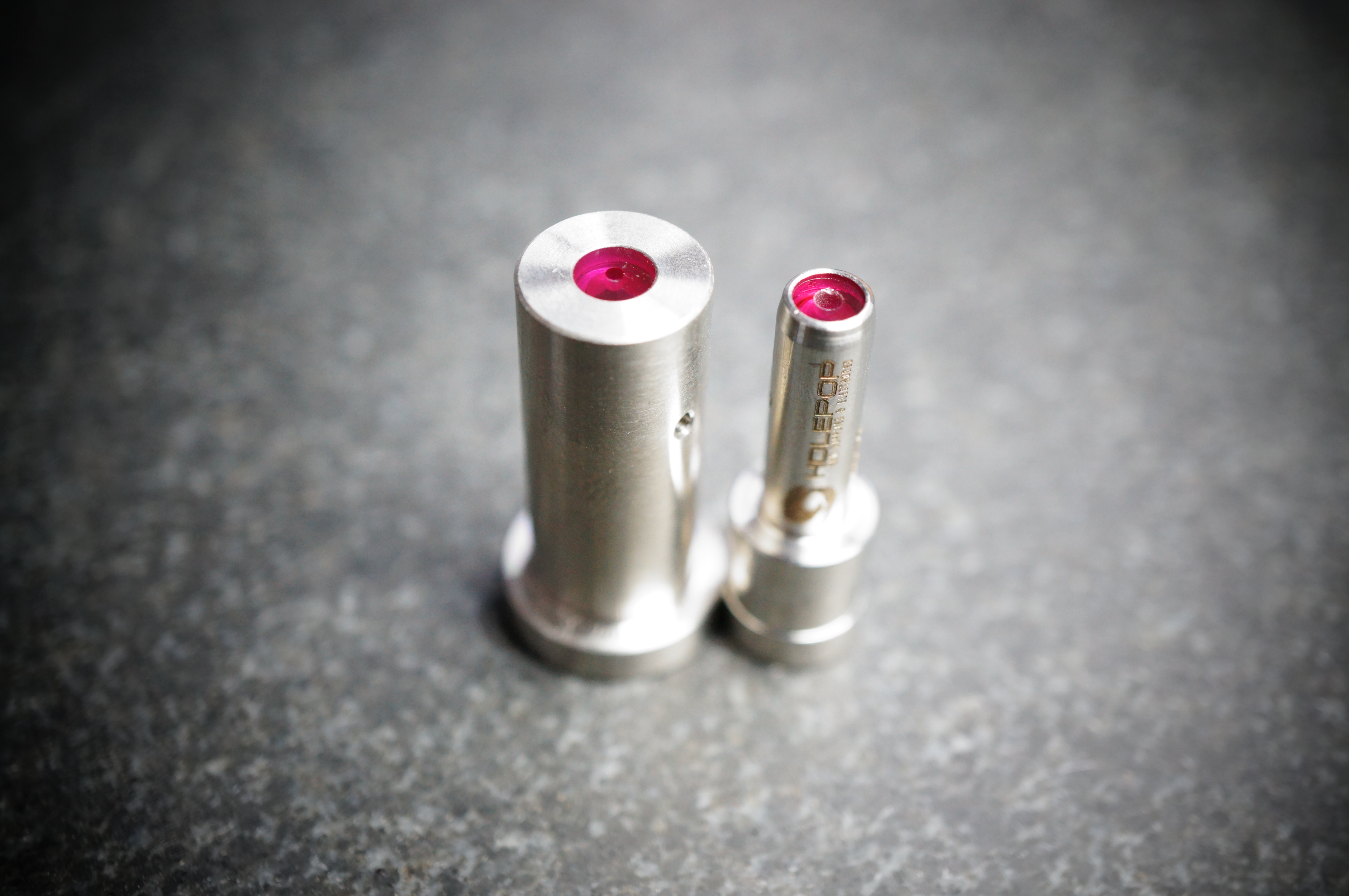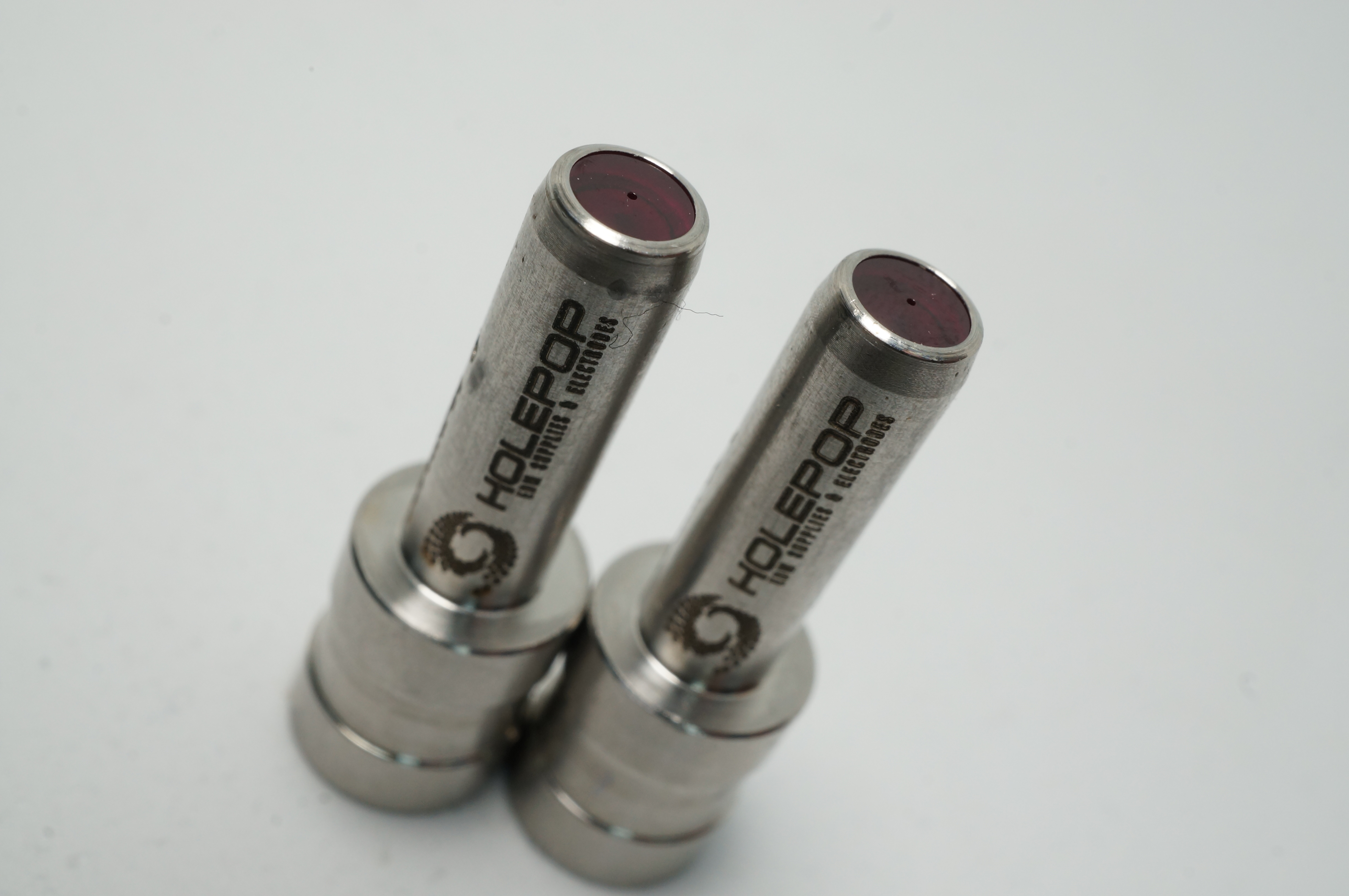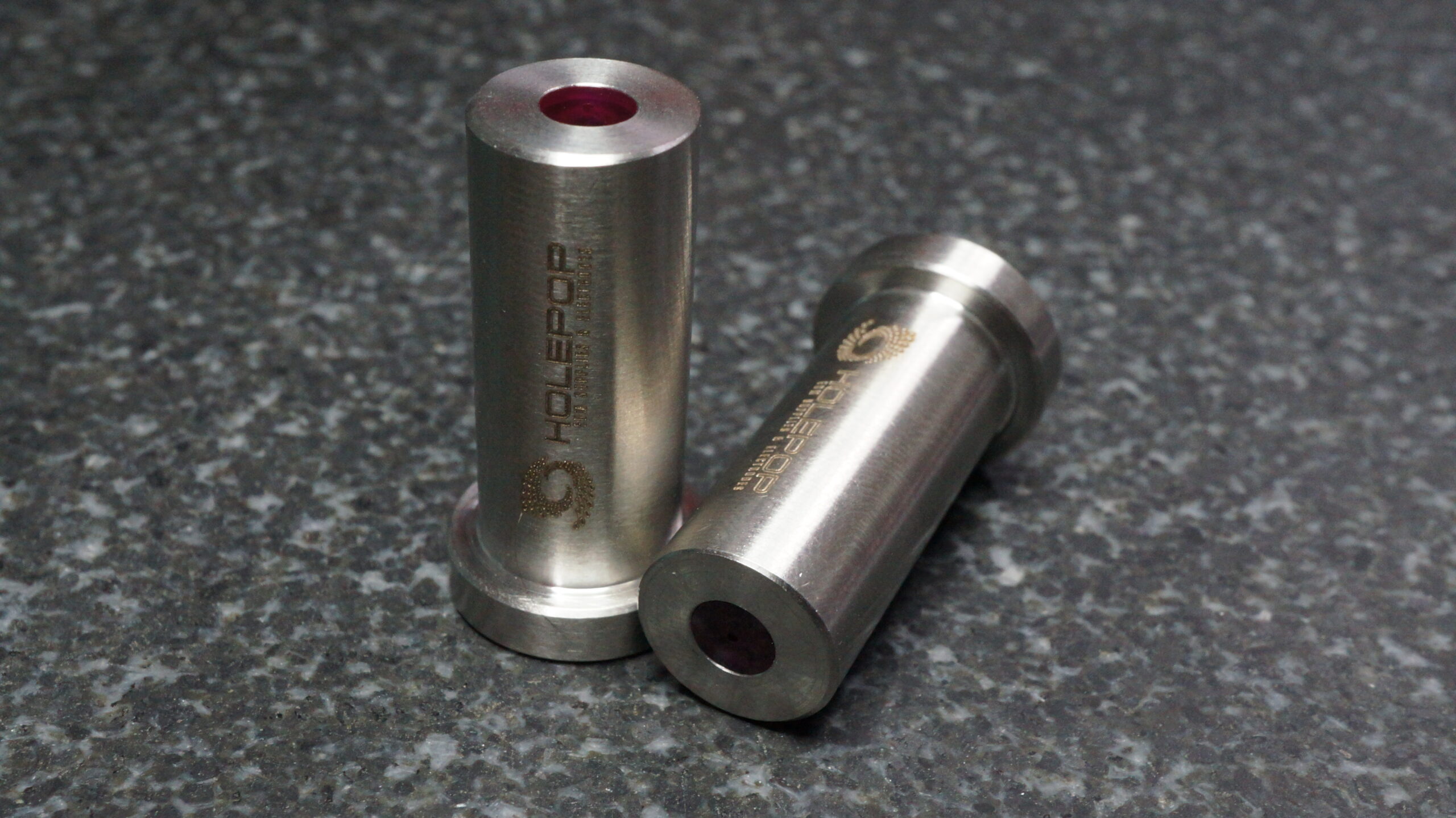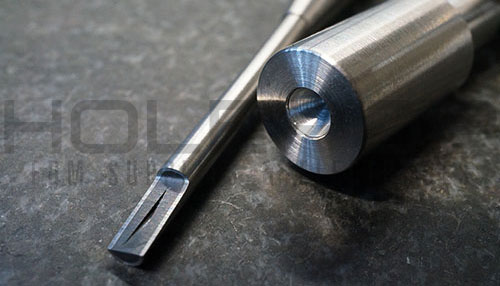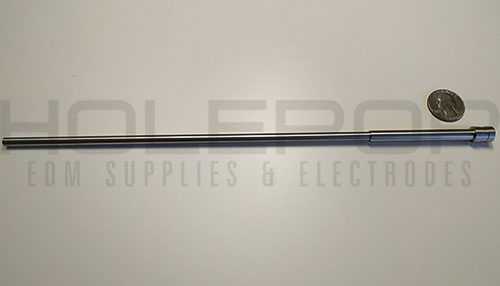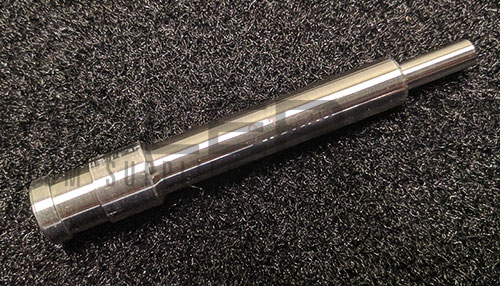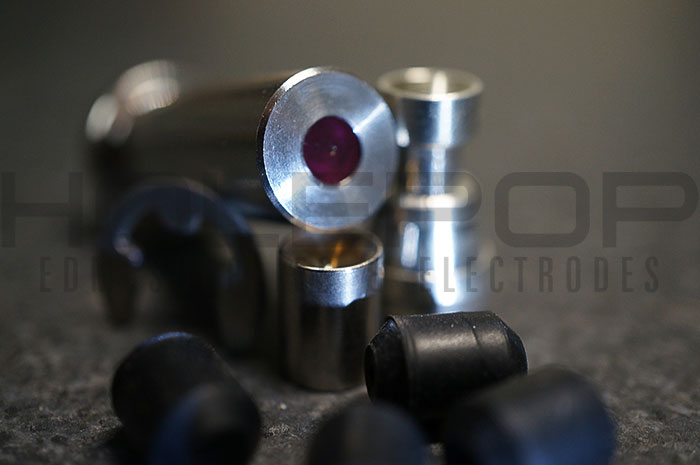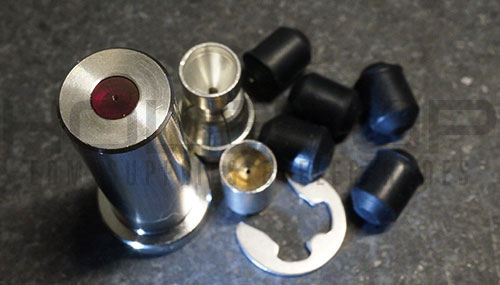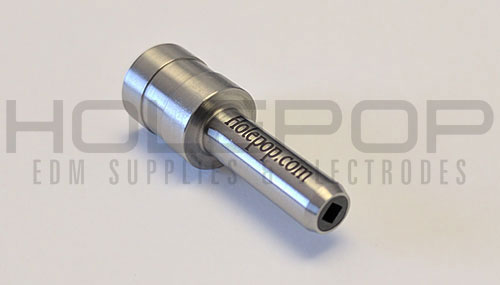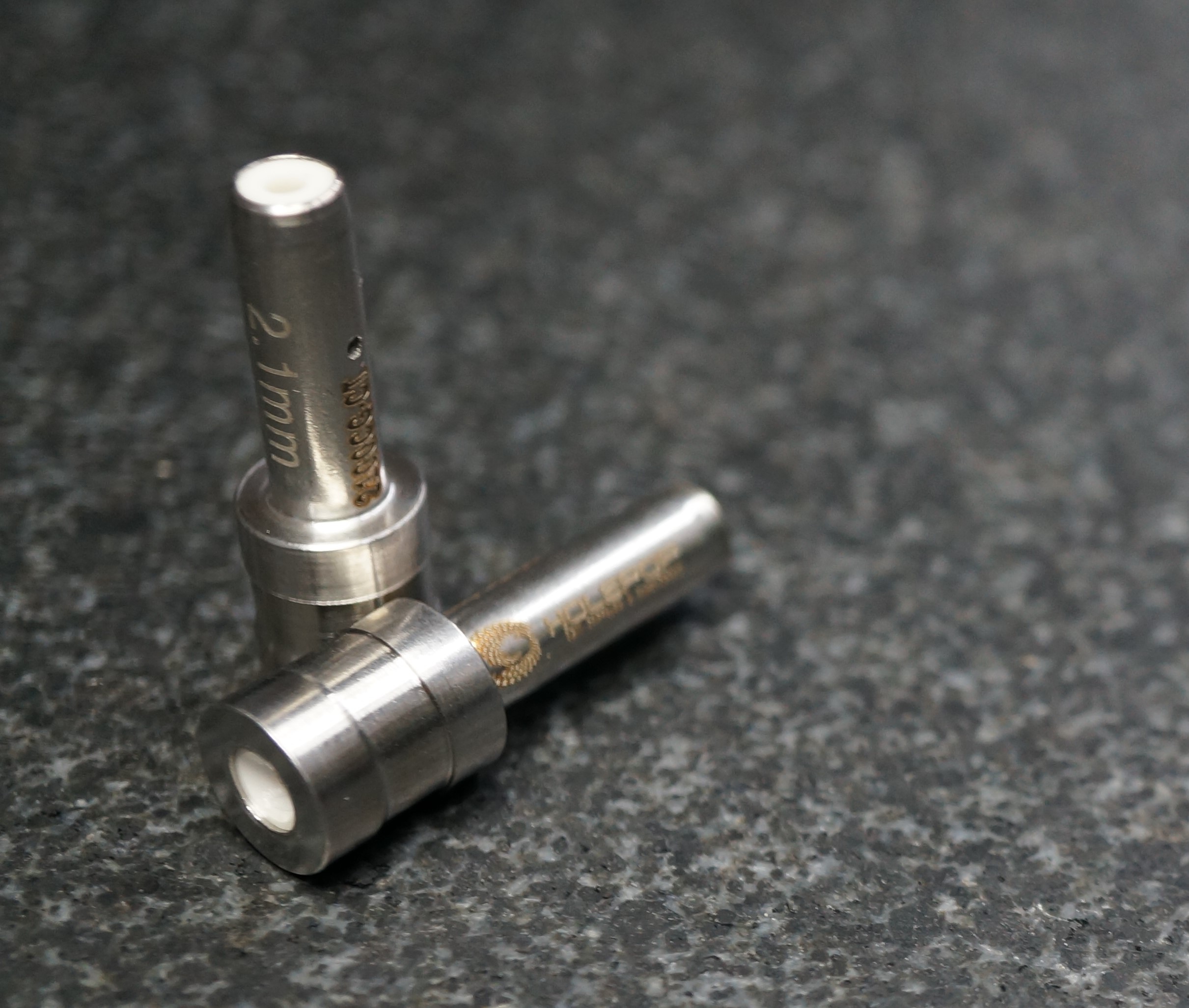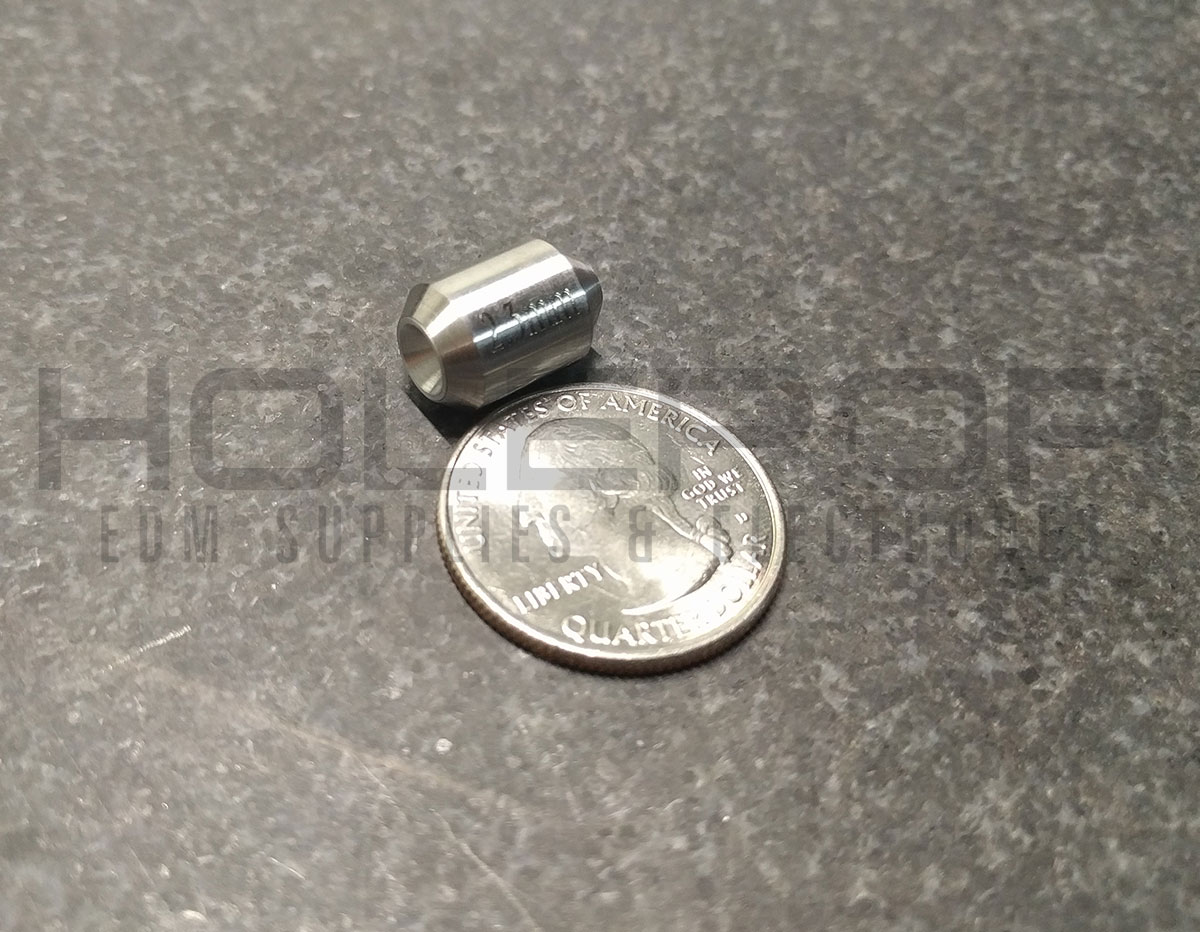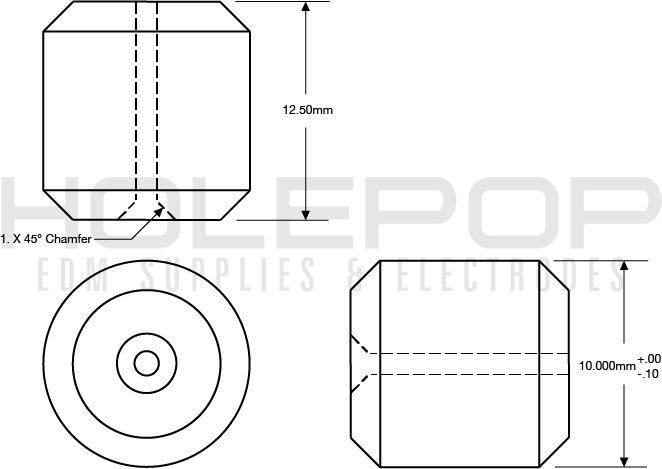EDM Electrode Guides
Ceramic, Sapphire, and Silicon Nitride EDM Guide Characteristics
At Holepop, we recognize that the EDM guide is crucial in the EDM drilling operation, serving to maintain the electrode’s fixed position as it makes its way through the material. The effectiveness of a guide hinges on three essential attributes: precise tolerances, specific geometry, and durability.
The importance of precise tolerances in a guide’s measurements cannot be overstated. Any slight deviation in a guide can amplify the imperfections in the electrode it holds, making the internal diameter of the guide critical—it must slightly exceed the diameter of its corresponding electrode. A fit that is too snug can hinder insertion, while one that is too loose can lead to inaccuracies in the drilled material. At Holepop, we customize guides to your exact requirements, ensuring the internal diameters of our electrode guides find the perfect balance between being too tight and too loose, guaranteeing that your electrodes hit their mark every time. However, achieving precision in perpendicular drilling is one thing; angling introduces its own set of challenges.
This is where guide geometry becomes crucial. Accuracy can falter when an electrode extends significantly from its guide, particularly at steep angles. This issue can be mitigated with a guide featuring a long, tapered tip. Our EDM guides are designed with versatility in mind, offering adjustable geometries to meet the needs of any task at hand. Yet, even the most meticulously crafted custom guides are subject to wear and tear. The resilience of a guide, therefore, is vital. This brings us to the materials at the heart of guide construction: traditional ceramic, sapphire, and silicon nitride. Each offers unique benefits in terms of durability, ensuring that our guides not only meet but exceed performance expectations in even the most demanding applications
Ceramic Vs. Sapphire Vs. Silicon Nitride
Each material offers unique benefits that cater to specific requirements in the EDM drilling process. Ceramic provides a cost-effective solution with good performance, sapphire offers superior wear resistance and precision, and silicon nitride delivers exceptional durability and efficiency for high-demand applications. The choice between these materials largely depends on the specific needs of the drilling task, including the materials being machined, the precision required, and budget constraints.When comparing ceramic, sapphire, and silicon nitride materials for EDM (Electrical Discharge Machining) electrode guides, it’s crucial to consider their individual characteristics and how they impact the EDM drilling process.
Conventional Ceramic Guides


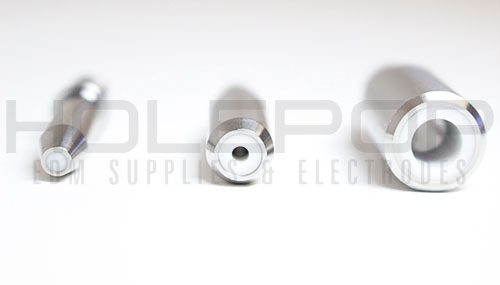





Known for their robustness, ceramic guides are widely used in EDM drilling for their ability to maintain tight tolerances and withstand high temperatures. They offer a good balance between performance and cost, making them suitable for a wide range of applications. Conventional ceramic is the most common guiding surface material, combining good performance with affordability. These guides are generally bought in standard sizes and configurations, which is good enough for most applications. Conventional ceramic guides are ideal for shops whose jobs are unpredictable, and where production runs are short.

